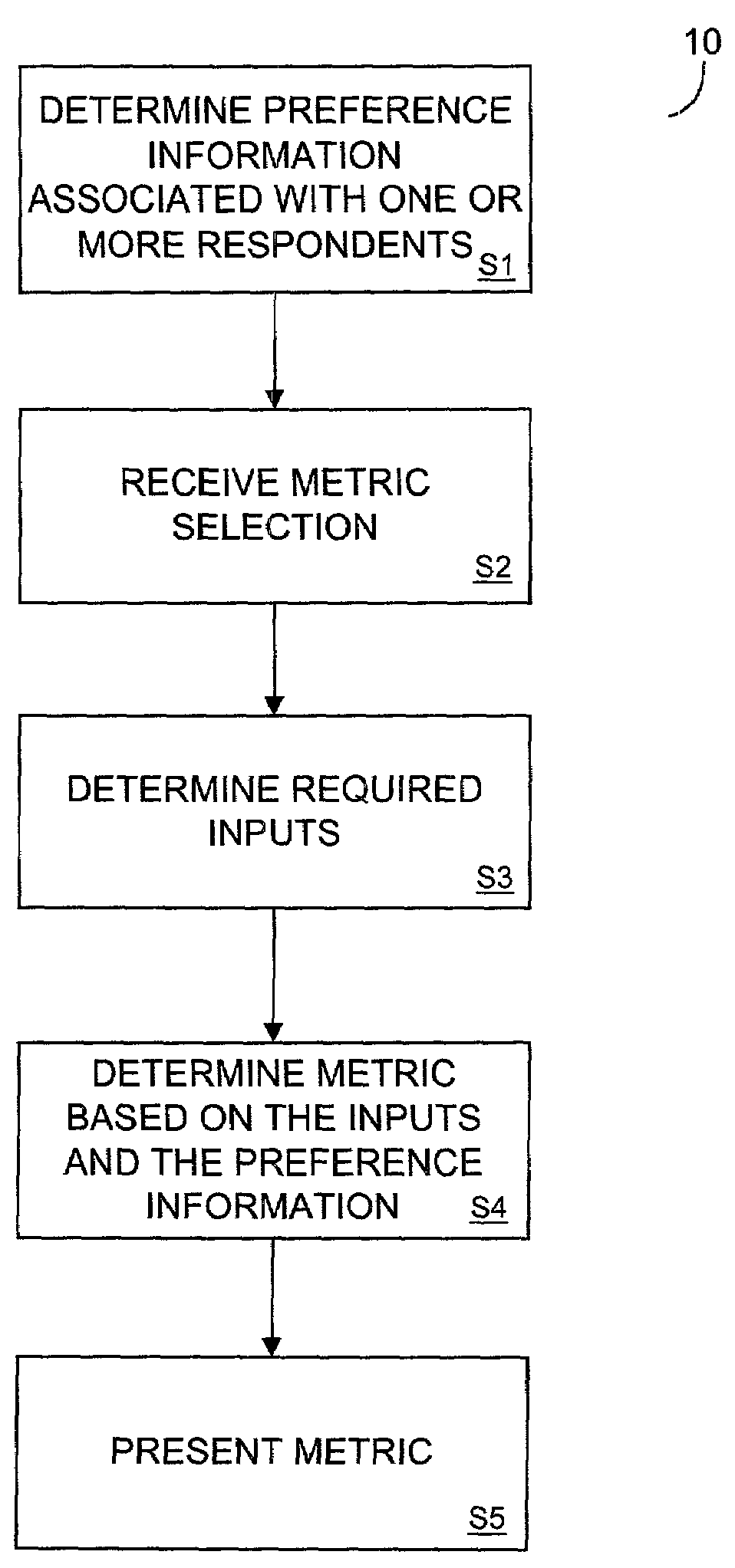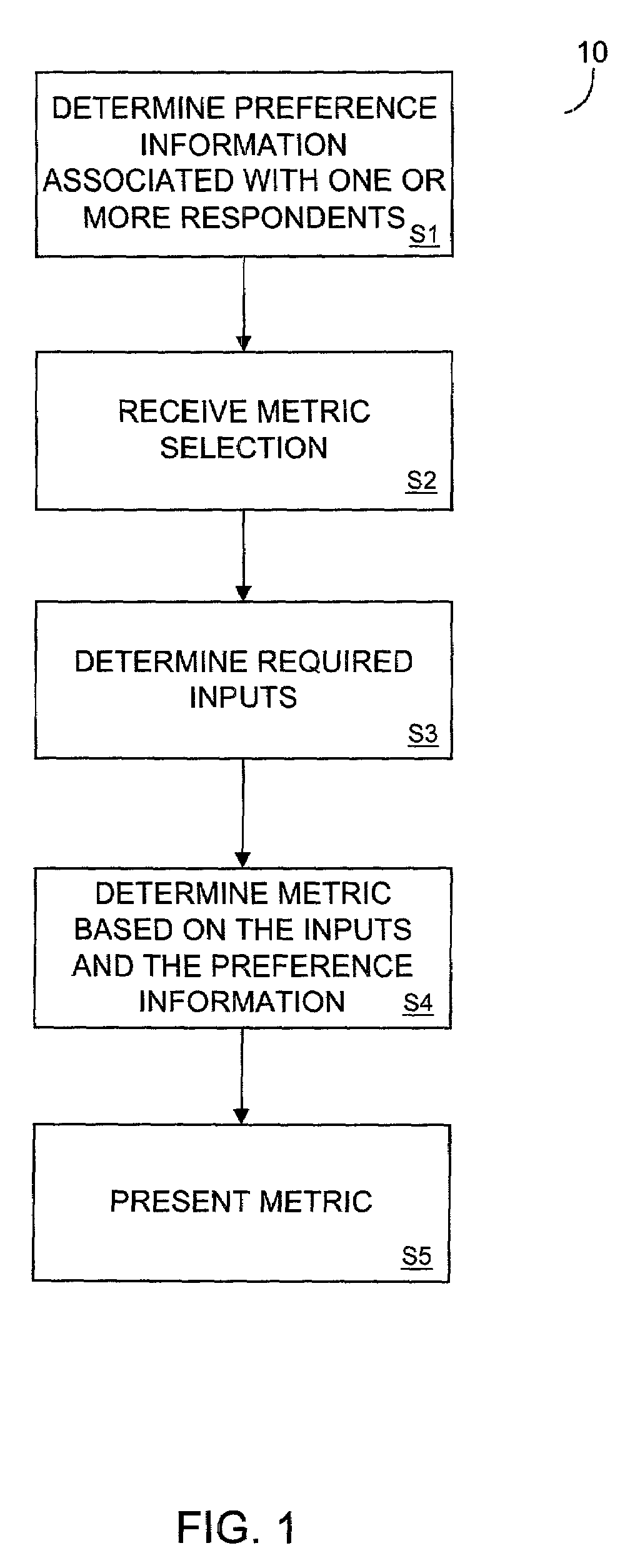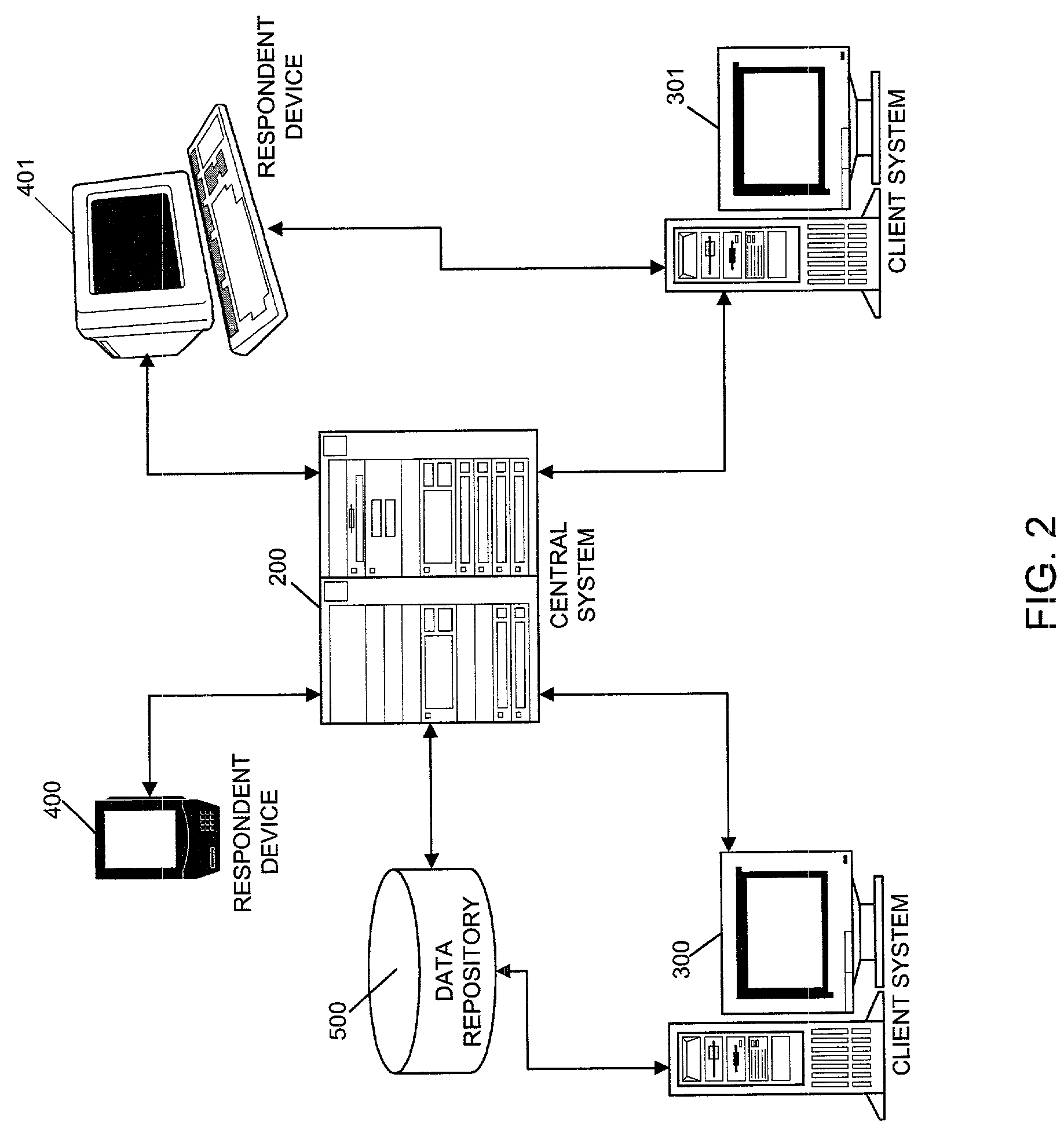Preference information-based metrics
a technology of preference information and metrics, applied in the field of preference information-based metrics, can solve the problems of not being particularly useful in making business decisions, and the benefits provided by the current system outweigh the costs
- Summary
- Abstract
- Description
- Claims
- Application Information
AI Technical Summary
Benefits of technology
Problems solved by technology
Method used
Image
Examples
Embodiment Construction
[0058]FIG. 1 is a flow diagram of process steps 10 according to embodiments of the invention. Process steps 10 will be described briefly below in the interest of providing an immediate introduction to features of the present invention. Accordingly, process steps 10 will be described later with respect to more specific examples and specific hardware and software embodiments, along with details of alternative embodiments.
[0059]Process steps 10 begin at step S1, in which preference information associated with one or more respondents is determined. The preference information may be determined by retrieving locally- or remotely-stored preference information, by receiving preference information from an external entity or by using a system such as those described in aforementioned U.S. patent application Ser. No. 09 / 754,612 to generate preference information. In this regard, the generated preference information may be pre-processed according to a system described in U.S. patent application...
PUM
 Login to View More
Login to View More Abstract
Description
Claims
Application Information
 Login to View More
Login to View More - R&D
- Intellectual Property
- Life Sciences
- Materials
- Tech Scout
- Unparalleled Data Quality
- Higher Quality Content
- 60% Fewer Hallucinations
Browse by: Latest US Patents, China's latest patents, Technical Efficacy Thesaurus, Application Domain, Technology Topic, Popular Technical Reports.
© 2025 PatSnap. All rights reserved.Legal|Privacy policy|Modern Slavery Act Transparency Statement|Sitemap|About US| Contact US: help@patsnap.com



